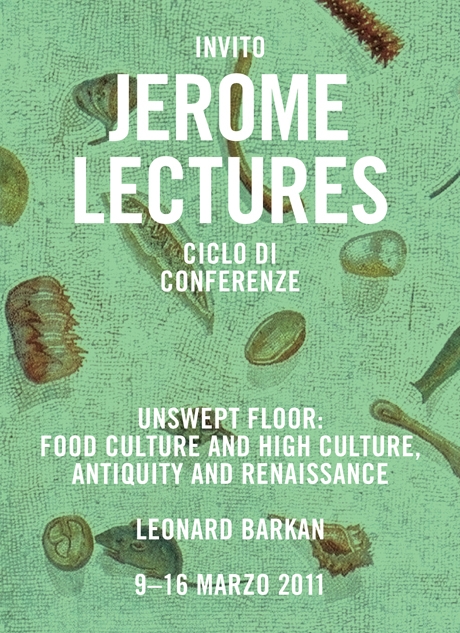Leonard Barkan – Attitudes toward Food and Wine in the Italian Renaissance

The Jerome Lectures are one of the premier international venues for presenting important work in Roman history and culture and its subsequent reception. In the course of five presentations from 9 through 16 March 2011, Leonard Barkan, the fortieth speaker in the series, will explore connections in the Renaissance between what is called “high culture”—poems, paintings, musical composition—and the world of eating and drinking. Leonard Barkan, RAAR’10, is Class of 1943 University Professor in the Department of Comparative Literature at Princeton University and Director of the Society of Fellows in the Liberal Arts.
All lectures will be in English.
Wednesday 9 March at 6 PM
I Lecture: What Kind of a Subject is Food?, Villa Aurelia
Eating and drinking, cooking and feasting, are fundamental human activities. But they are not always accorded their full importance within the history of civilization. This lecture asks the question how we might study them in the context of such parallel cultural expressions as art, music, and poetry. In particular, what happens when we observe the ways that culinary antiquity might have been reborn in the Renaissance?
Friday 11 March at 6 PM
II Lecture: Honest Pleasure, Villa Aurelia
Food may be the earliest source of enjoyment in the life of human beings, and as such it becomes one of the definitions—positive or negative—of pleasure itself. From Plato’s Symposium, which was, after all, a drinking party, to Horace’s Satires, which often centered on dining, to the gorgeously decorated dining rooms of Renaissance princes, the question of food and pleasure has been enacted and debated.
Saturday 12 March at 11 AM
III Lecture: Foraging in the Text, American Academy in Rome (Lecture Room)
What happens when one “reads” for the food? That is, carefully scrutinizing words and images from the past in which food seems like a marginal issue but turns out to be of central importance? Texts by Juvenal and Shakespeare, plus two visual works, one from antiquity and the other from the Renaissance, both on display in Rome, are explored.
Monday 14 March at 6 PM
IV Lecture: Copia and Cornucopia, Villa Aurelia
Where eating and drinking have been represented, in both words and pictures, they are often represented as extraordinarily copious—which may count positively as bounty or negatively as excess. From the classical myth of the cornucopia to the New Testament to Erasmus, from Athenaeus’ fifteen-volume description of a learned dinner party to paintings by Velázquez and Boucher, food has often been seen in quantity. And language has had to keep up with all this multiplicity and variety.
Wednesday 16 March at 6 PM
V Lecture: Metaphor and Embodiment, Villa Aurelia
These lectures have concentrated on food as a literal experience. Yet food is basic to figures of speech in every language. The series concludes by asking what the metaphors have to do with the reality and how certain famous cases of consumption—like Adam and Eve’s apple and Proust’s madeleine—manage at once to be figurative and also to relate to the body.